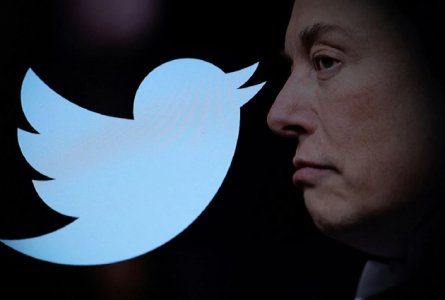your current location is:Home > TechnologyHomeTechnology
Those daydreams about Web3 may be hidden in the world's first web page
"If the Internet was an expedition, Tim Berners-Lee was the equivalent of Magellan, the first to circumnavigate the world." But people seem to have forgotten him these days.
It was not until a wave called Web3 hit and people clamored to "rebuild" an equal and open Internet that the starting point of this voyage was not remembered-31 years ago today, the world's first web pages.
"Internet"
In 2013, CERN (European Centre for Nuclear Research) wanted to bring together engineers from around the world for a "repair plan". This is in time for the 30th anniversary of the birth of the World Wide Web in 2019 (counted from Berners-Lee's Information Management: A Proposal submission on March 12, 1989), re-release of "the first Web (web) browser. ".
Berners-Lee Submitted Proposal丨Source CERN
Today, this Web browser can still be logged in normally, open it, and you will find the "source" of the World Wide Web (https://worldwideweb.cern.ch/browser/).
The first web browser丨Source browser screenshot
In 1990, the World Wide Web was launched as an informal project of CERN. Berners-Lee wrote the code for the World Wide Web on a NeXT computer, created the first Web browser, set up the first Web server, and then launched the first Web page (August 6, 1991) .
Residual red ink handwriting on the NeXT computer is still visible: "This computer is a server, never turn off the power."
Berners-Lee's NeXT computer丨Source Wikipedia
17 days after the birth of the first web page, it was accessed for the first time by people from outside the CERN organization (http://info.cern.ch/hypertext/WWW/TheProject.html) - the first time the World Wide Web was used as a The emergence of a publicly available service marked the "true birth" of the World Wide Web. The content of web pages tells people "what the World Wide Web is."
The first webpage丨Screenshot of the source webpage
The World Wide Web was the first system to combine computer networking and hypertext.
In the 1980s, "hypertext" was a major innovation in computing. Ian Ritchie founded a company, OWL, to provide Apple with native "hypertext tools". At that time, Berners-Lee approached Ritchie and said, "I have developed something called the World Wide Web, which enables the Internet to cover the whole world. Can you help me develop a browser?"
Fun is fun, Ritchie thought, but this guy's got a lot of buzz. Ritchie later gave a TED talk, "The Day I Rejected Tim Berners-Lee," and regretted it.
This "super-network structure", which is different from the top-down tree structure, can connect information anywhere, and the connection can be direct or indirect, one-way or two-way.
The key to building the World Wide Web lies in Berners-Lee's three technical standards, HTML, URL, and HTTP. Simply put, HTML language specifies how to write hypertext; URL specifies the address format of resources on the World Wide Web; browsers follow HTTP protocol to send requests to servers, and the server returns URLs pointing to resources.
Early "Internet access" required a series of complex operations. Different computers had different operating systems and different file structure formats, so that cross-platform information files could only be divided into islands independently of each other. The establishment of "uniform standards" makes it possible to share information between computers of different systems.
CERN tried to patent the World Wide Web at one point, but was eventually persuaded by Berners-Lee to give up. Finally, the relevant code is open sourced without copyright protection. Based on this, Marc Andreessen and others developed the first popular graphical interface browser, making it possible for more ordinary people to use the Internet. Netscape (Netscape) was also established.
But the Internet was originally open!
Someone in Vanity Fair once wrote, What do people use the Internet for? They (those who are non-academic, or not in the tech industry.) use email, and they send documents. The World Wide Web turned the Internet into a repository, by far the largest repository of information and knowledge for mankind. Suddenly, people can check the weather or track the stock market on the World Wide Web, and you can do a lot of things on the World Wide Web.
Everyone is familiar with the story behind it. The information flowing from the Internet has changed from static to dynamic; from one-way to interactive. First, portal websites emerged in large numbers. Later, we can not only browse information, but also participate in the creation and transmission of information.
But slowly, people also found that the development of the Internet deviates from the original intention, and their behavior data feeds one after another technology oligarchs and capital giants - Facebook masters your social network, Taobao obtains consumer preferences, Alipay obtains financial data. Tech companies don't have to pay for it, but they make money from it.
In Berners-Lee's words, "the Internet is broken." Three urgent problems are still in the throat: misleading false information; data privacy leakage; app silos caused by the platform.
Berners-Lee was born in 1955, the same year as Jobs and Gates. His parents were involved in the development of the first computer to be put on the market today, the influence of a good family atmosphere, plus the "opportunity" given by that era - the Internet was established, the personal computer with a graphical interface appeared, the Domain Name System (DNS) matured ... all laid the foundations for the birth of the World Wide Web.
Today, Berners-Lee, who is in his 60s, has started a business again in order to return the Internet to the "utopia" it once was.
He wants to give everyone a Pod that holds all of the user's data. Build a "new standard" on which developers can build applications. Certain data can be authorized briefly while the user is using an app. The user has the right to take back the data authorization at any time. Applications and platforms provide different levels of services depending on the type and amount of data, but cannot store data.
Berners-Lee wanted to create a transparent data authorization and escrow mechanism, just as the World Wide Web and various technical standards were invented. He has been working on a "re-decentralization" effort. But aside from technical considerations, this is obviously a more difficult idea to implement today.
The term Web 3.0 was originally coined by Berners-Lee as a vision for the next stage of the Internet—computers can also process information and data like humans, enabling barrier-free communication between humans and computers. It is more like a network form driven by artificial intelligence.
Tim Berners-Lee丨Source Wikipedia
Although today's more popular definition of "Web 3.0" is closer to the concept proposed by Ethereum co-founder Gavin Wood in 2014, Less trust, more truth (less trust, more truth). It is widely believed that the next generation of the Internet will be blockchain-based and decentralized.
However, when people talk about the imagination of the next-generation Internet today, they always take the World Wide Web (Web 1.0) as an example.
The World Wide Web itself is a product of "decentralization", it is transparent and open. Since any article on the World Wide Web can be freely linked to each other, it provides a space for free communication without a central authority.
In 1994, Berners-Lee launched the W3C (World Wide Web Consortium), aiming to become a "consensus organization" that establishes neutral and compatible technical standards. "To me, the Web is a web of people connecting people, not machines and machines, or documents and documents."
He wrote down some ideas a long time ago, but it has not been realized until today.
Previous:Finally not the old mold! Apple's entry-level iPad exposure: the headphone jack is gone
Next:Google Fitbit smartwatches will stop supporting music streaming from PCs, cost a subscription
related articles
Article Comments (0)
- This article has not received comments yet, hurry up and grab the first frame~













